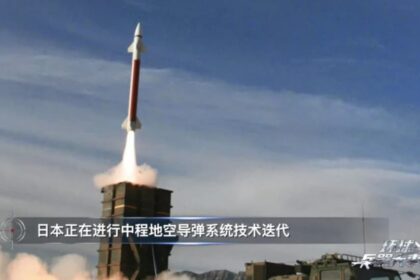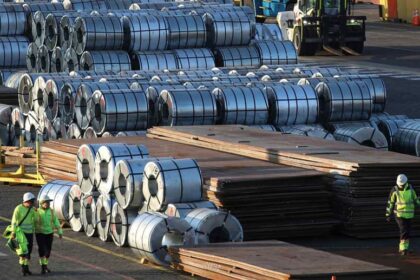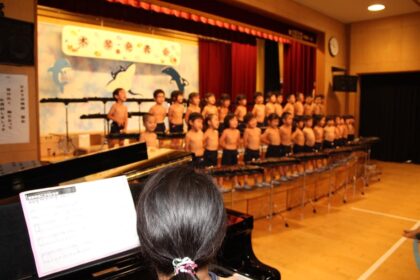Seoul’s Summer Swarm: The Rise of the Lovebug
In the summer of 2025, Seoul, South Korea’s bustling capital, has found itself at the center of an unusual and unsettling phenomenon: a massive invasion of so-called “lovebugs.” These black-winged insects, officially known as Plecia longiforceps, have blanketed hiking trails, urban parks, and even residential neighborhoods, sparking widespread public discomfort and a heated debate over how best to respond. Viral videos and images have shown places like Gyeyangsan Mountain in Incheon, just west of Seoul, with observation decks and paths carpeted in black by the sheer volume of insects. The lovebug invasion is not just a nuisance—it is a vivid illustration of how climate change and rapid urbanization are reshaping ecosystems and challenging city management.
- Seoul’s Summer Swarm: The Rise of the Lovebug
- What Are Lovebugs and Why Are They Swarming Seoul?
- Climate Change and Urban Heat: The Perfect Storm
- Public Outcry and the Challenge of Pest Control
- Ecological Benefits and the Search for Balance
- Lovebugs and the Broader Climate Crisis
- How Are Residents Coping?
- Lessons for the Future: Integrated Pest Management and Urban Planning
- In Summary
What Are Lovebugs and Why Are They Swarming Seoul?
Lovebugs are a species of march fly, easily recognized by their distinctive mating behavior: pairs fly attached at the abdomen, often for several days. Males typically die after three to four days, while females live about a week, laying hundreds of eggs in moist, organic-rich soil before dying themselves. Originally native to subtropical regions of southeastern China, Taiwan, and Japan’s Ryukyu Islands, lovebugs were first scientifically identified in South Korea during a major outbreak in 2022. Since then, their numbers have exploded, particularly in the Seoul metropolitan area.
Unlike mosquitoes or other biting insects, lovebugs pose no direct threat to humans. They do not bite, sting, or transmit diseases. Their main offense is their overwhelming presence and the discomfort they cause by swarming in large numbers, sticking to clothing, vehicles, and even entering homes. Despite their harmlessness, a Seoul Institute survey found that 86% of residents consider lovebugs pests, ranking them just behind cockroaches and bedbugs in terms of public revulsion.
Climate Change and Urban Heat: The Perfect Storm
Experts point to a combination of climate change and urban development as the primary drivers behind the lovebug surge. Rising global temperatures have made Seoul’s climate more hospitable to species that once thrived only in warmer, more humid regions. The city’s notorious “urban heat island” effect—where concrete and asphalt absorb and radiate heat, making urban areas significantly warmer than surrounding countryside—further exacerbates the problem. This localized warming creates ideal breeding conditions for lovebugs, allowing them to expand their range northward into temperate zones like Seoul.
Shin Seung-gwan, a biologist at Seoul National University, notes that while climate change is a major factor, the urban heat island effect may be even more significant in explaining why lovebugs are concentrated around Seoul rather than in the country’s southern, naturally warmer regions. He explains:
“I think, more than climate change, it may have more to do with the urban heat island effect [occurring when a city has much warmer temperatures than the surrounding area]. But the scale of the current population surge certainly isn’t normal and is something that warrants further observation.”
Additionally, urban sprawl and the development of mountain habitats have disrupted local ecosystems, creating new breeding grounds for lovebugs and other insects. As cities expand into previously wild areas, they inadvertently provide the moist, organic-rich environments that lovebug larvae need to thrive.
Public Outcry and the Challenge of Pest Control
The lovebug invasion has not gone unnoticed by city authorities. Complaints to municipal offices have more than doubled in recent years, from 4,418 in 2023 to over 9,296 last year. In some districts, more than 100 reports have been filed in a single day. The public’s patience is wearing thin, with many residents demanding immediate action to rid the city of the pests.
However, the debate over how to control the lovebug population is complex. While some have called for aggressive chemical pesticide use, environmental experts and city officials warn that such measures could do more harm than good. Chemical sprays not only kill lovebugs but also threaten beneficial insects, pollinators, and even human health. Seoul authorities have launched public information campaigns emphasizing the ecological benefits of lovebugs, noting that their larvae help decompose organic matter and enrich the soil, while adults pollinate flowers.
Instead of broad-spectrum pesticides, officials recommend a range of non-chemical strategies:
- Water spraying to remove insects from surfaces
- Installing light traps and sticky pads around outdoor lighting, as lovebugs are attracted to bright lights
- Wearing dark-colored clothing when outdoors, since the insects are drawn to bright colors
- Using household insect sprays or vacuum cleaners for indoor infestations
- Blocking light sources with curtains to prevent lovebugs from entering homes
Ecological Benefits and the Search for Balance
Despite their unpleasant appearance, lovebugs play a beneficial role in the ecosystem. Their larvae break down decaying organic matter, contributing to soil health, while adults assist in pollination. This dual role complicates the question of whether they should be classified as pests or protected as part of the urban ecosystem.
Seoul’s government has resisted calls to officially designate lovebugs as pests, which would allow for widespread chemical extermination. Instead, the city is investing in research on more targeted, environmentally friendly solutions. Government scientists are developing fungal pesticides that specifically target lovebug larvae, aiming to minimize collateral damage to other organisms. Meanwhile, natural population controls are beginning to emerge: birds such as magpies and sparrows are learning to prey on lovebugs, leading to noticeable declines in affected areas.
Shin Seung-gwan, the Seoul National University biologist, offers a broader perspective:
“In the process of organisms adapting to a new environment, it’s common for their populations to explode in the absence of natural enemies. But over time, those natural enemies or pathogens appear, and their population density decreases.”
This pattern has been observed with other invasive species, such as the spotted lanternfly, whose numbers eventually stabilized after the arrival of a parasitic wasp that preys on their eggs.
Lovebugs and the Broader Climate Crisis
The lovebug invasion is not an isolated incident. Around the world, scientists are documenting the northward migration of insects and other species as a direct consequence of climate change. In the United States, for example, the Lone Star tick has expanded its range, bringing new health risks to previously unaffected areas. These shifts can disrupt local ecosystems, threaten biodiversity, and create new challenges for urban management.
In Seoul, the lovebug outbreak serves as a warning sign of broader ecological disruption. Researchers from Pusan National University and the Seoul Institute have highlighted the infestation as evidence of declining biodiversity and the unintended consequences of rapid urbanization. The sheer volume of adult lovebugs swarming and dying in urban and natural areas is a visible symptom of these deeper changes.
How Are Residents Coping?
For many Seoulites, the lovebug invasion has become a daily annoyance. Hikers on popular trails wave their arms to clear swarms from their path, while residents report finding the insects in their homes, cars, and even on public transportation. Social media is awash with videos and photos documenting the scale of the problem, and some have even taken a humorous approach—one YouTuber famously cooked and ate a “lovebug burger,” describing the taste as “like trees.”
Despite official reassurances about the insects’ harmlessness, the psychological impact is real. The overwhelming presence of lovebugs has led to calls for more aggressive action, with some residents expressing frustration at what they see as government inaction. Yet, as environmentalists point out, the solution is not as simple as spraying chemicals. The challenge is to find a balance between public comfort and ecological responsibility.
Lessons for the Future: Integrated Pest Management and Urban Planning
The lovebug crisis in Seoul is prompting a re-evaluation of pest control strategies and urban planning. Experts advocate for Integrated Pest Management (IPM), a holistic approach that combines biological controls (such as encouraging natural predators), cultural practices (like removing breeding grounds), and targeted, minimal use of pesticides. This strategy aims to manage pest populations in a way that is both effective and environmentally sustainable.
Urban planners are also being urged to consider the ecological impacts of development. Reducing the urban heat island effect—through increased green spaces, reflective building materials, and better landscaping—can help make cities less attractive to invasive species. Designing buildings and public spaces to minimize insect attractants, such as bright outdoor lighting, is another practical step.
Citizen science initiatives, where residents help monitor insect populations and report outbreaks, are gaining traction as a way to gather valuable data and raise public awareness. As cities around the world grapple with similar challenges, Seoul’s experience offers important lessons in resilience, adaptation, and the need for proactive, science-based solutions.
In Summary
- Seoul is experiencing a major invasion of lovebugs, driven by climate change, urban heat, and ecosystem disruption.
- Lovebugs are harmless to humans but are widely considered pests due to their overwhelming numbers and nuisance factor.
- Authorities are avoiding chemical pesticides, instead promoting water spraying, light traps, sticky pads, and public education.
- Lovebugs provide ecological benefits by pollinating flowers and enriching soil, complicating the debate over pest control.
- Natural predators and targeted fungal pesticides are emerging as potential long-term solutions.
- The outbreak highlights the broader impacts of climate change and urbanization on local ecosystems.
- Integrated Pest Management and smarter urban planning are key to managing future outbreaks and maintaining ecological balance.











